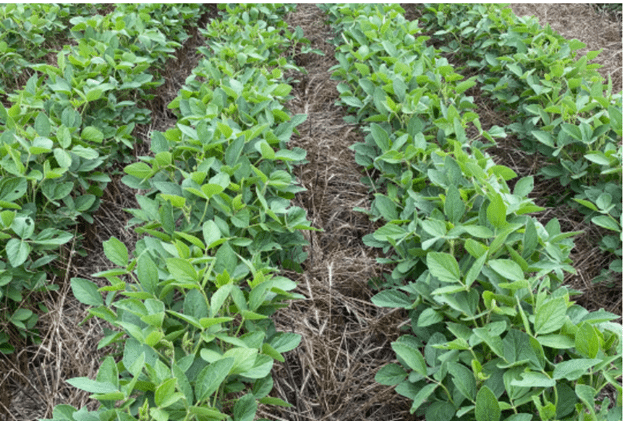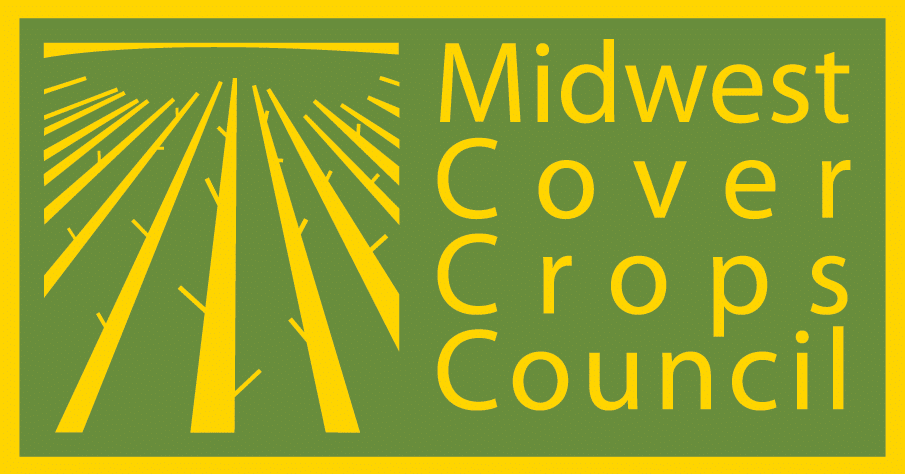Midwest Cover Crops Council (MCCC-133)
This publication is intended to provide a starting point for farmers who are new to growing cover crops. With experience, farmers may fine-tune the use of cover crops for their systems.
Introduction
Getting started with cover crops in Manitoba can be challenging due to the short growing season and variable precipitation from year to year. A good place to start with cover crops in annual grain rotations is after small grains, such as spring wheat, winter wheat, oat, barley, or cereal rye. Start small and scale up as you gain experience. Depending on the size of your operation, this could be a small plot, an area within a field, or a small field. Note that the term cereal rye and fall rye can be used interchangeably in this fact sheet. They are synonyms.
Planning and Preparation
- Setting a goal—Cover crops need a management plan just like cash crops. Determining a goal is the first step when making your cover crop management plan. Learn about different types of goals for cover crops in Cover Crops 101 (see Resources). The most common goals for planting cereal rye cover crops ahead of soybeans are to create ground cover that protects soil from erosion in the fall and spring (Figure 1), provide weed suppression for small-seeded broadleaf weeds, and provide living ground cover to improve soil trafficability for seeding under wet conditions.
- Finding resources—Resources for fall-seeded cover crops that are specific to Manitoba are limited but growing. Producer networks to share information and experience are getting established. Some Manitoba watershed districts offer programs to assist producers with adopting cover crops. Contact your local watershed district for more information.
- Seed purchase—Plan ahead and have your cover crop seed on hand before harvest. Order cereal rye seed early from a reputable seed supplier.
Fall Work
- Seeding after grain harvest—After harvest and residue management, seed cereal rye as early as possible to allow for optimal cover crop establishment and biomass production in the fall. Manitoba Agriculture recommends seeding cereal rye for grain production between August 25 and September 25 with a seeding rate of 0.75–1.50 bu/acre. Seeding rate recommendations for cereal rye cover crops from neighboring U.S. states range from 0.50–1.00 bu/acre for drilled or 1.00–1.50 bu/acre for broadcast seeding. When drilled, the recommended seeding depth for cereal rye is 0.75–2.00 inches. Research from western Canada with winter wheat found that a seeding depth of 0.50–1.00 inch optimized plant establishment and minimized the risk of winter damage (Loeppky et al. 1989, 128). These are the best available local guidelines to start with for seeding cereal rye cover crops and can be adjusted based on experience.
- Green bridge awareness—Cereal rye cover crops have the potential to act as a green bridge for wheat streak mosaic virus. Similar to winter wheat, cereal rye cover crops growing near maturing spring wheat or other cereals create a green bridge that allows mites to overwinter and infect neighboring crops of spring wheat with wheat streak mosaic virus the following spring. This virus will not affect a soybean crop following a cereal rye cover crop. However, if this disease is a concern in your area and spring wheat may be grown in neighboring fields, plan to manage the cereal rye cover crop using the most effective management practices for breaking the green bridge for winter wheat crops. Control volunteer cereals after small grain harvest, and plan to have a ten-day gap between small grain harvest and the emergence of your cereal rye cover crop.
Spring Work
- Scouting—In the spring, evaluate how well your cereal rye cover crop overwintered. Spring environmental conditions should be assessed as accumulated heat units and moisture availability will influence your decision on when to terminate the cover crop.
- Termination timing—Termination of cereal rye can occur from two weeks before soybean planting to one day after planting. In a University of Manitoba study looking at cereal rye cover crop termination dates, soybean yield was unaffected by the cereal rye cover crop when terminated in this range. If spring soil moisture conditions are dry, it is best to terminate cereal rye at least two weeks before planting as the cover crop can use up moisture needed by the soybean plants for optimal germination and emergence. Producers with experience using cover crops may be more comfortable terminating closer to soybean planting. In general, farmers new to cover crops can expect biomass production from cereal rye cover crops to have less spring growth in Manitoba, especially when terminated early, compared to neighboring growing regions to the south.
- Termination method—Cereal rye can be terminated in the spring with herbicides, such as glyphosate. Use standard best-management practices, and follow the herbicide label to ensure proper termination. For organic production, the cover crop can be terminated with tillage.
- Soybean planting—Direct-seeding is the best option when seeding into a dead, dying, or living cereal rye cover crop. When seeding into a living or dying cereal rye cover crop, disc planters or seeders can cut through the plant material. When using seeders with shank or hoe openers, plan to terminate the cereal rye cover crop two weeks before planting to limit rye growth and residue until you gain experience with the performance of your openers under these new conditions.

Evaluation
Taking time to evaluate how things went is an important step for adapting this cover crop recipe to conditions on your own farm. Did you meet your goals? What went right? What would you change next time?
Resources
Cover Crops 101 (Seine Rat Roseau Watershed District)
2020 Prairie Cover Crop Survey Report (University of Manitoba publication)
Rye: Production and Management (Manitoba Agriculture website)
Wheat Streak Mosaic (Manitoba Agriculture website)
Manitoba’s Watershed Districts (Manitoba Agriculture website)
References
Loeppky, Heather, G. P. Lafond, and D. B. Fowler. 1989. “Seeding Depth in Relation to Plant Development, Winter Survival, and Yield of No-Till Winter Wheat.” Agronomy Journal 81, no. 1 (January): 125–29. https://doi.org/10.2134/agronj1989.00021962 008100010023x
Authors
Yvonne Lawley, University of Manitoba; Virginia Janzen, University of Manitoba (Note: This publication was adapted with consent from MCCC under a joint project to produce customized introductory guidance about cover crops for all member states/provinces.)
Reviewers and Contributors
Martin Entz, University of Manitoba; Dorthea Gregoire, Seine Rat Roseau Watershed District; Eileen Kladivko, Purdue University; Oscar Molina, Agriculture and Agri-Food Canada; Callum Morrison, Manitoba Agriculture; Anna Morrow, Midwest Cover Crops Council; Andres Lozano Sepulveda, Manitoba Association of Watersheds
The Midwest Cover Crops Council (www.midwestcovercrops.org) aims to facilitate widespread adoption of cover crops throughout the Midwest by providing educational/outreach resources and programs, conducting new research, and communicating about cover crops to the public.
Funding for this project was provided by McKnight Foundation.
December 2022.
The U.S. Department of Agriculture (USDA) prohibits discrimination in all its programs and activities on the basis of race, color, national origin, age, disability, and where applicable, sex, marital status, familial status, parental status, religion, sexual orientation, genetic information, political beliefs, reprisal, or because all or a part of an individual’s income is derived from any public assistance program. (Not all prohibited bases apply to all programs.) Persons with disabilities who require alternative means for communication of program information (Braille, large print, audiotape, etc.) should contact USDA’s TARGET Center at (202) 720-2600 (voice and TDD). To file a complaint of discrimination write to USDA, Director, Office of Civil Rights, 1400 Independence Avenue, S.W., Washington, D.C. 20250-9410 or call (800) 795-3272 (voice) or (202) 720-6382 (TDD). USDA is an equal opportunity provider and employer. ©2022 by MCCC. All rights reserved.
